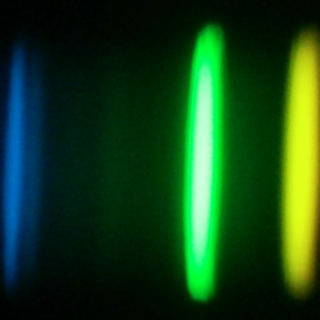Bibcode
Szigeti, L.; Mészáros, Szabolcs; Smith, Verne V.; Cunha, Katia; Lagarde, Nadège; Charbonnel, Corinne; García-Hernández, D. A.; Shetrone, Matthew; Pinsonneault, Marc; Allende Prieto, C.; Fernández-Trincado, J. G.; Kovács, József; Villanova, Sandro
Referencia bibliográfica
Monthly Notices of the Royal Astronomical Society, Volume 474, Issue 4, p.4810-4817
Fecha de publicación:
3
2018
Número de citas
19
Número de citas referidas
19
Descripción
Carbon isotope ratios, along with carbon and nitrogen abundances, are
derived in a sample of 11 red-giant members of one of the most
metal-rich clusters in the Milky Way, NGC 6791. The selected red-giants
have a mean metallicity and standard deviation of [Fe/H] = +0.39
± 0.06 (Cunha et al. 2015). We used high-resolution H-band
spectra obtained by the SDSS-IV Apache Point Observatory Galactic
Evolution Experiment. The advantage of using high-resolution spectra in
the H band is that lines of CO are well represented and their line
profiles are sensitive to the variation of
12C/13C. Values of the
12C/13C ratio were obtained from a spectrum
synthesis analysis. The derived 12C/13C ratios
varied between 6.3 and 10.6 in NGC 6791, in agreement with the final
isotopic ratios from thermohaline-induced mixing models. The ratios
derived here are combined with those obtained for more metal poor
red-giants from the literature to examine the correlation between
12C/13C, mass, metallicity, and evolutionary
status.
Proyectos relacionados

Nucleosíntesis y procesos moleculares en los últimos estados de la evolución estelar
Las estrellas de masa baja e intermedia (M < 8 masas solares, Ms) representan la mayoría de estrellas en el Cosmos y terminan sus vidas en la Rama Asintótica de las Gigantes (AGB) - justo antes de formar Nebulosas Planetarias (NPs) - cuando experimentan procesos nucleosintéticos y moleculares complejos. Las estrellas AGB son importantes
Domingo Aníbal
García Hernández

Abundancias Químicas en Estrellas
La espectroscopía de estrellas nos permite determinar las propiedades y composiciones químicas de las mismas. A partir de esta información para estrellas de diferente edad en la Vía Láctea es posible reconstruir la evolución química de la Galaxia, así como el origen de los elementos más pesados que el boro, forjados principalmente en los interiores
Carlos
Allende Prieto